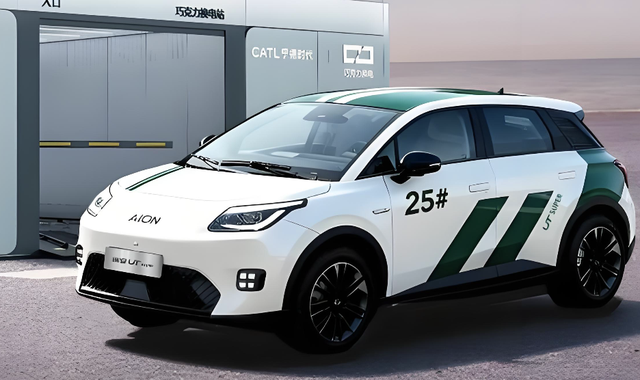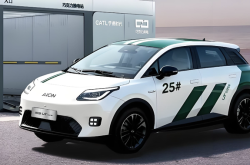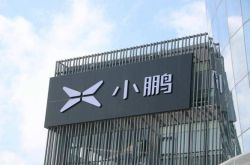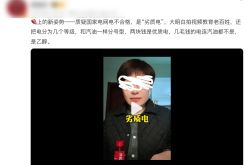JD's "National Good Car" Revolutionizes New Energy Vehicle Market, Making Battery Swapping a Necessity
![]() 11/11 2025
11/11 2025
![]() 538
538

Recently, JD, in partnership with GAC Group and CATL, officially unveiled the "National Good Car" Aion UT Super. With the battery-leasing version priced at just 49,900 yuan and the whole-vehicle version at 89,900 yuan, it stands as the sole pure electric model under 100,000 yuan that supports battery swapping. This pricing strategy not only falls below market expectations but also reshapes the consumption logic of new energy vehicles through the "vehicle-battery separation" model and ecological collaboration.
Tripartite Collaboration Cuts Costs, Delivering 500km Range with Battery Swapping
The Aion UT Super's affordability stems from the deep synergy between JD, GAC, and CATL. JD capitalizes on its exclusive sales channels to sidestep the price markups of traditional multi-tier 4S dealerships. GAC reduces manufacturing costs through economies of scale, while CATL minimizes the battery's cost share via technological advancements in its chocolate batteries and battery swapping ecosystem.
The battery-leasing version is available for 49,900 yuan, with a monthly battery rental fee of 499 yuan (temporarily reduced to 399 yuan/month). Users opting for battery buyout within three years can deduct 100% of the paid rent. The whole-vehicle version is priced at 89,900 yuan. Buyers who purchase the battery and join the chocolate battery swapping network pay a 699 yuan/year management service fee, enjoying perks such as battery testing and replacement subsidies.
Limited-Time Offers: The first 15,000 customers placing orders receive government and brand subsidies (2,000 yuan/unit for the battery-leasing version and 4,000 yuan/unit for the whole-vehicle version). The first 1,000 JD PLUS members receive an additional 2,500 yuan JD E-card. A 180-day price protection guarantee ensures a 10-fold difference payout if the price drops within 180 days of vehicle delivery.
The Aion UT Super, a pure electric compact car, is built on an A-class vehicle platform with a 2,750mm wheelbase. It offers dual-color body options, including Monet Purple and Champs-Élysées Beige, along with sporty exterior wraps. Key features include a 54kWh lithium iron phosphate battery from CATL, a CLTC range of 500km, fast charging capability (30%-80% charge in 25 minutes), and a 99-second rapid battery swap.
As of November 8, 800 chocolate battery swapping stations have been deployed nationwide, covering cities like Xi'an, Fuzhou, and Shenyang, with plans to expand to 1,000 stations by 2025. The vehicle debuts with Huawei Cloud's in-car system, supporting AI voice large models and seamless interconnection with HarmonyOS, Apple, and Android phones. It also boasts practical features such as a 540-degree panoramic view, reverse parking sentry mode, electric tailgate, and keyless entry.
JD's strategy extends beyond offering vehicles at competitive prices. By recruiting new vehicle delivery centers nationwide, JD is constructing a one-stop service network for "sales-delivery-aftersales" and expanding into new energy battery maintenance. Some of JD's over 3,000 offline JD Auto Service stores have forged aftersales maintenance partnerships with GAC, holding "Class I maintenance enterprise" qualifications to provide battery maintenance services.
CATL's chocolate battery swapping service has launched a self-operated store on JD, enabling users to reserve battery swaps via the JD App and enjoy discounts during events like "6.18" and "Double 11." Through services such as maintenance, battery swapping rights, and benefits, JD aims to convert its price advantage into long-term user relationships, creating a closed-loop ecosystem of "vehicle purchase-usage-maintenance."
JD's market entry with the 49,900 yuan battery-leasing Aion UT Super signifies not just a price war but an ecological reconstruction experiment. The success of its "National Good Car" strategy will depend on its ability to establish a strong foothold in the aftersales sector.
Battery Swapping Model Paves the Way for the Future
By 2025, as the penetration rate of new energy vehicles exceeds 55%, a revolution in energy replenishment methods is quietly reshaping the industry landscape.
When NIO's fourth-generation battery swapping station completes a battery replacement in just 2 minutes, CATL's chocolate battery swapping stations surpass 800 units, and GAC Aion's UT Super disrupts the market with a 49,900 yuan battery-leasing price, the battery swapping model has transitioned from a "customized solution" for commercial vehicles to a "new favorite" in the private car market.
At a taxi battery swapping station in Beijing, the sight of 12 taxis completing battery swaps within half an hour underscores the irreplaceability of the battery swapping model in high-frequency usage scenarios. Data indicates that by 2025, sales of new energy commercial vehicles will exceed 900,000 units, with battery-swapping heavy-duty trucks achieving a 15% penetration rate in closed scenarios like ports and mines, and single stations serving over 70 vehicles daily on average.
The UT Super model, jointly launched by GAC Aion and JD, directly breaks through the price defenses of traditional fuel vehicles with a 49,900 yuan battery-leasing price and an 89,900 yuan whole-vehicle price. Its core logic lies in "vehicle-battery separation": users are not burdened with the battery cost, while automakers form a closed loop through battery leasing, cascading utilization, and recycling.
NIO's BaaS (Battery as a Service) model has validated the feasibility of this approach—vehicle-battery separation reduces the starting price of the NIO ES6 to 298,000 yuan, and by 2025, private car battery swapping users will account for 37% of the total.
In 2025, the National Development and Reform Commission and the Energy Administration jointly issued the "Three-Year Doubling" Action Plan for Electric Vehicle Charging Facility Service Capacity, explicitly including battery swapping stations in the scope of new infrastructure construction. The Ministry of Finance provides subsidies of 300 yuan per kilowatt for rural battery swapping stations, while regions like Tianjin and Zhejiang offer subsidies of up to 30% of the equipment investment for urban stations. More critically, the Ministry of Industry and Information Technology is promoting the establishment of a nationally unified battery standard system, clearing obstacles for the large-scale adoption of the battery swapping model.
The "chocolate battery" jointly developed by CATL and GAC has set an industry benchmark. This battery adopts a 60kWh standard module, supporting full-series adaptation from A00-class to C-class vehicles, with mechanical interface errors controlled within 0.1mm. NIO's battery swapping cooperation agreements with seven automakers further specify the complete unification of chassis interfaces and communication protocols by 2026. As GAC Group President Feng Xingya stated, "Standardization is the key to transitioning the battery swapping model from 'islands' to a 'continent.'"
NIO's fourth-generation battery swapping station has achieved fully automatic battery swapping: vehicle identification, battery removal, charging inspection, and new battery installation proceed without human intervention. CATL's Qiji heavy-duty truck battery swapping station integrates an AI scheduling system, dynamically planning battery swapping routes based on vehicle location, battery level, and road conditions, improving single-station operational efficiency by 40%. By 2025, the average battery swapping time at stations nationwide has been reduced to within 3 minutes, approaching the refueling experience of fuel vehicles.
Battery swapping stations are emerging as vital nodes in the new power system. BYD's megawatt flash charging technology achieves a charging power of 1 megawatt, while battery swapping stations can store electricity during off-peak hours and supply it back to the grid during peak hours through V2G (Vehicle-to-Grid) technology. Data from State Grid shows that during the summer peak electricity demand in 2025, battery swapping stations nationwide cumulatively discharged over 20 million kWh to the grid, equivalent to reducing the combustion of 20,000 metric tons of standard coal.
NIO's "battery swapping circle of friends" has expanded to include seven automakers, such as Changan, Geely, and FAW, with the shared battery swapping network covering 85% of expressway service areas nationwide. GAC and CATL's joint venture, Times Electric Services, has integrated battery swapping services into the GAC APP, allowing users to reserve battery swaps and make payments with a single click. This "hardware + service" ecological model enables automakers to transition from "product manufacturers" to "mobility service providers."
Sinopec and PetroChina are leveraging their existing gas station networks to transform them into battery swapping stations, having built 500 "fueling + battery swapping" integrated stations in the Yangtze River Delta and Pearl River Delta by 2025. Southern Power Grid is piloting "photovoltaic-storage-charging-swapping" integrated stations in Hainan, achieving 100% green electricity supply for battery swapping stations through photovoltaic power generation and energy storage battery peak shaving. CATL and Didi's joint venture for battery swapping has developed customized batteries for ride-hailing scenarios, with a daily service volume exceeding 300,000 times.
Although the construction cost of a single battery swapping station remains as high as 1.5 million yuan, large-scale operations are showing signs of profitability. NIO's Q2 2025 financial report reveals an 18% gross profit margin for its battery swapping business, primarily derived from battery leasing revenue, cascading utilization benefits, and grid peak shaving subsidies. Orient Securities research predicts that the domestic battery swapping industry chain market size will reach 133.4 billion yuan by 2025, with battery asset management accounting for 45% and battery swapping station operations accounting for 30%.
With the 49,900 yuan battery-leasing price breaking down price barriers, the 2-minute battery swapping speed rivaling fuel vehicles, and a trillion-yuan market size on the horizon, the battery swapping model for new energy vehicles is no longer an "optional choice" but a "must-answer question" for the industry's future.





